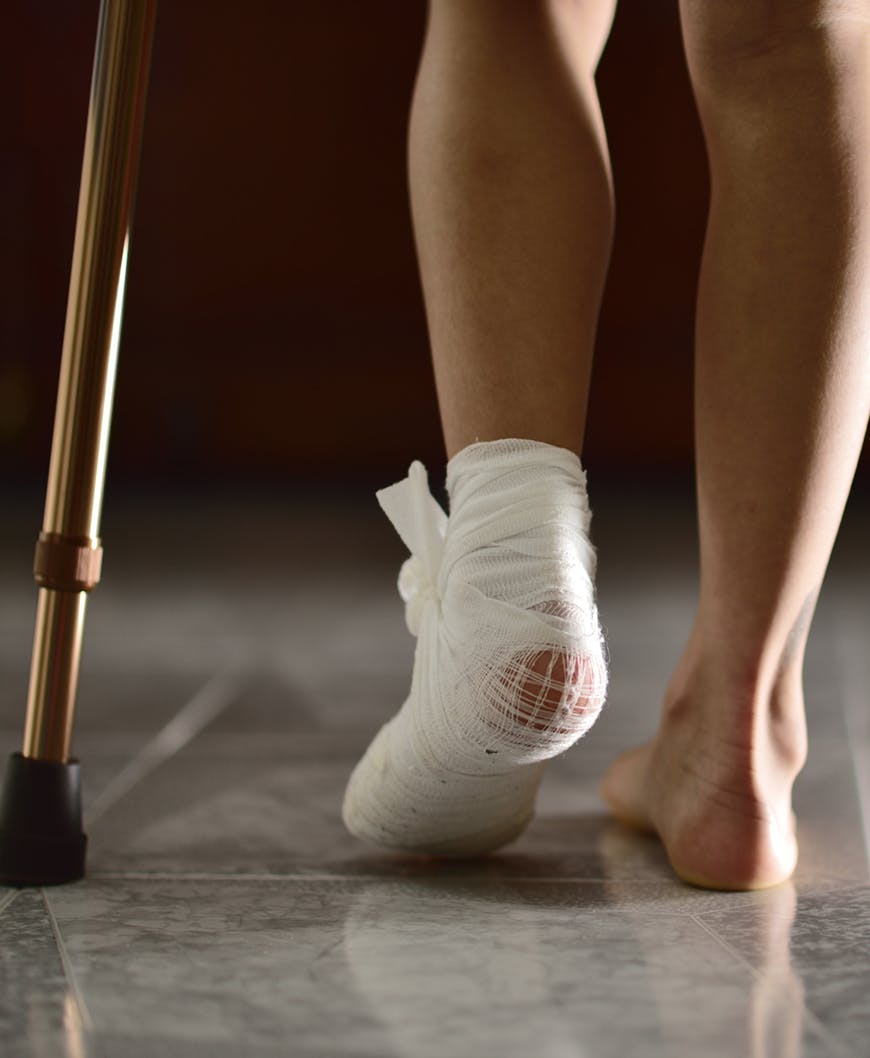When you have an ankle sprain, it means that one of the ligaments connecting your bones together has stretched or torn — usually due to some form of trauma. Ankle sprains can occur in daily life, sports, and other physical activities, or as a result of an occupational hazard. Common sources of sprains include ankle sprains from losing balance on stairs or after a jump, wrist sprains from catching yourself after a fall, or knee sprains from improper pivots. At Foot & Ankle Speciality Group in Rancho Santa Margarita, ankle sprains are diagnosed quickly and a treatment plan laid out for each individual patient.
Symptoms of a Sprain
- Pain: It’s rare to have a sprain without having any pain when moving the affected joint. Paying close attention to where exactly you’re feeling the pain can help distinguish between sprains, strains, fractures, and other forms of injury.
- Bruising: You’ll typically see some amount of bruising with serious sprains, especially those which affect less padded joints such as your ankle. Sprains more obscured by other tissues and bone (for example, a sprained knee) may only show slight redness or no coloring at all.
- Swelling: Swelling is almost inevitable with a sprain and can be the first sign that you have a real injury. Often the swelling will occur before pain, bruising, or other symptoms.
- Limited motion: Depending on the severity of your sprain, you may have difficulty moving the affected joint due to pain or serious stretching of the ligament. The more limited your motion is, the more you should consider seeing a doctor.
- Tenderness: Mild sprains are often characterized only by tenderness: a bit of over-sensitivity to weight or touch, but not much else.
- “Pop” feeling or sound: It’s extremely common for the moment of a sprain to be accompanied by an audible popping sound from the affected joint. In fact, it can be one of the easiest ways to determine a sprain has occurred instead of a different injury. You may feel a pop when you sprain a ligament, even if you don’t hear one.
- Inflammation: Simple inflammation of the nearby tissues is nearly inevitable with a sprain, even a mild one.
- Inability to support weight: Sometimes your first sign of injury won’t be pain or swelling, but a joint that refuses to support any weight.










